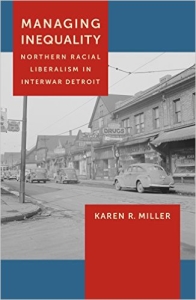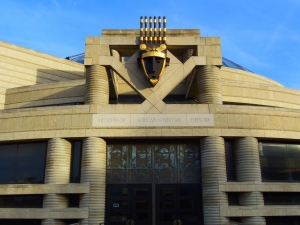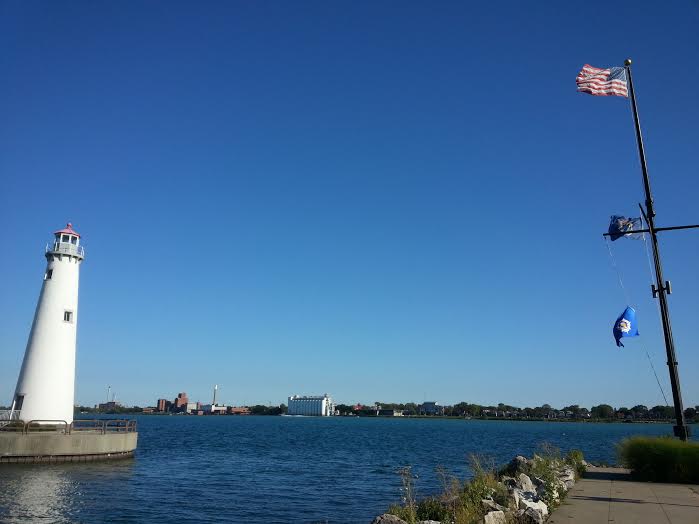Last week, I attended a lecture at Marygrove College (which is a beautiful space that I highly recommend visiting) given by Karen R. Miller, author of “Managing Inequality: Northern Racial Liberalism in Interwar Detroit”. I appreciated being back in an academic environment for the night and being educated on this crucial era in Detroit regarding the racial structures being put in place, particularly with housing. My favorite part of the night, though, was after the discussion. It’s not that I found the presentation dull or invaluable – on the contrary, the History minor in me reveled in the 1930s photos and written citing of primary sources – but rather that the questions and comments posed by community members educated me on the present tone of Detroit’s racial and economic tensions. One woman’s comment in particular stuck with me, and I will focus on her concern of resources.
She was the first person to stand and speak after Karen Miller was finished, and while she did not share her name, she identified as a longtime Detroit resident and a real estate agent registered with the state. She asked Miller if she saw much of the segregation and ensuing capitalism as a design flaw. The woman then went on to acknowledge that the rest of the world – and sometimes Detroit residents – perceive the city as having “nothing”. No resources, no good education, no high culture, nothing to attract or retain. When, in fact, Detroit has so many of these things.
In terms of education, the woman noted, there is the College for Creative Studies and Marygrove College, as well as Wayne State University, which attracts students from around the world. For a rainy day of cultural enrichment and education, the city offers the DIA, the Motown Museum, the Detroit Public Library, the Detroit Science Center, the Detroit Historical Museum, and the Charles H. Wright Museum of African American History. Not to mention the various performing arts centers, and the Detroit Symphony Orchestra, the first orchestra in the world to broadcast on radio. For transportation there is the Amtrack station, the Detroit Metropolitan Airport just outside the border in Romulus, and the smaller Coleman A. Young International Airport. Should I keep going?
Not only does Detroit have a vast array of intellectual and built resources, but one extremely valuable natural resource: the Detroit River. The straight (yes, a straight) connects the city to North America’s waterways that in turn leads into the Atlantic Ocean. This could be a treasured tool for tourism and trade, and yet it is an ill kept (http://www.michigan.gov/deq/0,1607,7-135-3313_3677_15430_57344—,00.html) body of water not used to its full potential, as there are no international cruises that come through and little international trade.
There is a perception of nothingness in Detroit when it comes to resources, and perception can be dangerous when it leads to reality. This perception, therefore, can be thought of as a design flaw, and is a reason, the real estate agent claimed, that property value in the city is so much lower than neighboring suburbs. It is true that there are certain things this city lacks, which makes it even more important to ensure awareness of all the great spaces, people, and knowledge, so they can be utilized to build toward bridging the resource gap.
I am grateful that one thing this city does not lack is a wealth of spaces to hold such lectures as the one at Marygrove, and I am grateful for people like the woman who stood up to share her knowledge of and passion for the city.
(Note: I acknowledge that it’s odd starting a post about an institutional racism lecture and spending the rest of the time talking about resources, but I do think they are related, in part due to historical oppression and segregation. I hope to delve deeper into the topic of structural racism in the city in a future post.)



